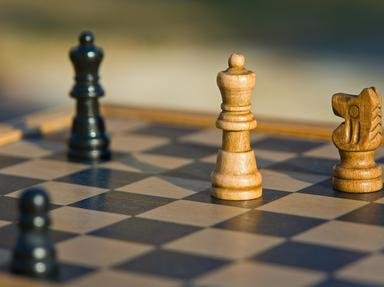Quiz Answer Key and Fun Facts
1. Chaturanga, the oldest ancestor of all scacchic games, originated in which country?
2. Xiangqi is a rare example of a scacchic game whose pieces are played how?
3. Why do the pieces used in Shogi lack a player color?
4. By definition, a game of Bughouse (over the board, not online) absolutely requires which of the following?
5. The most popular of its variety, Wladyslaw Glinski's Hexagonal Chess is most popularly played in which part of the world?
6. What is randomized in Fischer Random Chess?
7. This pared-down version of chess was the first chess game that a computer ever played, at what nuclear research laboratory?
8. How many starting positions are possible in a game of Janggi? (Different starting positions are possible because 2 of the pieces on the left side are transposable. The same holds true with 2 on the right side -- and the opponent has the same options.)
9. With a name like Dragonchess, it should not surprise you to learn that this three-level game was invented in 1985 by who?
10. Sometimes called Tri-Dimensional Chess, this particular scacchic game became famous after being featured in a few episodes of which science fiction series?
Source: Author
nautilator
This quiz was reviewed by FunTrivia editor
WesleyCrusher before going online.
Any errors found in FunTrivia content are routinely corrected through our feedback system.
